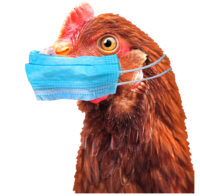Around this time each year many of us start to get more than a little tired of hearing, “Get out and Vote!”
What? AGAIN?
Yes! Voting is the lifeblood of our nation! That, and of course, bribery.
Fortunately, hereabouts we can register and vote by mail, so there is no need to actually “get out” toa polling place to vote. That said, readers who’ve not voted in person for a while might try it, just to see those new-fangled voting machines used to rig elections (allegedly). Curious readers can learn about voting machines at https://www.sos.ca.gov/elections/ovsta/frequently-requested-information/voting-systems-used-counties/how-use-your-countys-voting-system/dominion-voting-systems-imagecast-evolution.
BTW and ICYMI: Kamala Harris and Donald Trump are running for President. Voters stillundecided who to choose should talk with their mental healthcare provider.
In the City of Sonoma, no challengers filed for the two open City Council seats, but the incumbents kindly agreed to stay for another term. Which is good, because now the entire Valley can focus on the Local Issue Of The Year: Measure J.
Details of Measure J can be found at: https://www.endfactoryfarming.vote/measure-text. It is best read with a nice beverage, as it begins with twenty-six – yes, 26 – “whereas-es,” which, in Measure-speak, are the reasons why voters should vote for it.
Your correspondent has read the entire Measure and, upon awakening, submits this summary understanding:
· Its objective is to protect the environment, farm animals, and the health and well-being of Sonoma County residents by capping – and eventually phasing out – the number of CAFOs, aka Concentrated Animal Feeding Operations, now operating in the unincorporated areas of the County.
· The reasons given for doing so include a number of CAFO conditions which are said to abuse animals, endanger the environment and/or humans, and/or reduce adjacent property values.
· Whether an animal feeding operation is a CAFO or “just a farm” depends on the type and number of animals being Concentrated for Feeding. For example, a CAFO has more than 200 dairy cattle; or more than16,500 turkeys; or more than 37,500 chickens; and so forth for other types and numbers of animals listed in a table. Feeding operations with less than the number of animals-per-type specified are not considered CAFO’s and could presumably continue to operate.
Feeding operations exceeding the number of allowed animals per type would have three years to downsize into compliance or be subject to a $1,000 fine for a first offense, $5,000 for a second and $10,000 for a third. After three years, each day a CAFO operates would constitute a separate offense.
Far be it for your correspondent to tell anyone how to vote or to get into any back-and-forth over confining hundreds or thousands of huggable creatures with big brown eyes, soft snuggly fur, cute clucks and waddles and delightful oinks, moo’s or baaa’s, to whom CAFO’s now give total freedom to do nothing all day but eat, poop and pee, in enough space-per-critter to lay down and die.
Nope, such a conversation might be beyond the scope of a Family Newspaper. Indeed, a thorough exploration of animal feeding operations could induce severe vomiting and convulsions in young readers who might inadvertently ask where all the nice animals go after they leave a CAFO, or how hamburgers and chicken bits get “fresh from farm to table.”
It’s probably best that families explore the pro’s and con’s of Measure J in private. Afterwards, Mommy and Daddy can decide how they will vote.
And what to have for dinner.






Be First to Comment